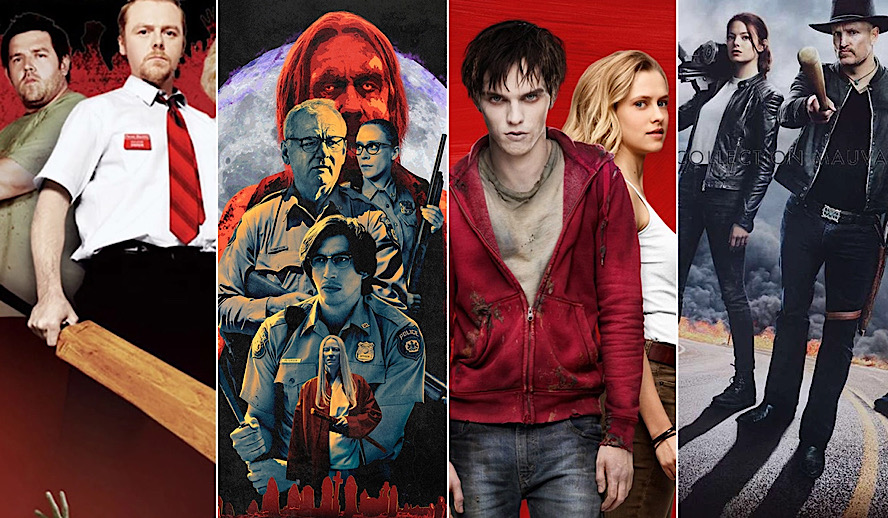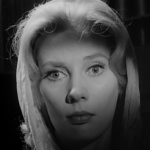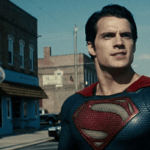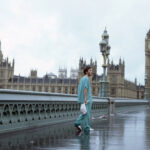Table of Contents

Video Version of this Article
Photo/Video: Zombie Movies/Hollywood Insider YouTube Channel
Of all the movie monsters spawned within the reign of Universal’s juggernaut horror film production studio in the 1930s and 40s, few have enjoyed as long and prosperous a career as that of the zombie. Evolving through several distinct eras and formal conceptions, the undead have maintained uniquely genre-bending relevancy all but unknown to the likes of werewolves, mummies, and invisible men.
For nearly a century the prolific filmography of the undead has persisted beyond just a cornerstone of the horror genre, but additionally that of mass-appeal cinema and the larger world of popular culture. With the recent Netflix release of Zack Snyder’s ‘Army of the Dead’ (2021), it is clear that the dynasty of the undead will persevere into this coming decade. But how has this titanic sub-genre risen to the celebrated heights it enjoys today, and what exactly is it that has reliably drawn nearly six generations of audiences back in search of more?
Related article: ‘In the Heights’ – Behind the Scenes and Full Commentary/Reactions from Cast & Crew
Humble Origins in the Realm of the Hollywood B-Movie – ‘White Zombie’ and ‘I Walked with a Zombie’
The origins of the examinate creature’s screen career is widely traced back to director Victor Halperin’s esoterically impressive gothic island horror ‘White Zombie’ (1932). The film starred monster-movie maestro Bela Lugosi, famous for starring roles in the likes of ‘Dracula’ (1931) and ‘The Wolf Man’ (1941), as a nefarious sorcerer with the ability to turn the living into zombies to serve his own wicked will. Lugosi’s mystical Legendere sets his sights on the unsuspecting Madeline after being tasked to lure her away from her fiance by a wealthy landowner smitten by her. The plan goes awry when Legendere decides to take Madeline for himself and casts a spell that leaves the woman little less than a listless lumbering zombie. While some segments of the film’s audio record have been lost to time and most of its terror has dried up in light of its more outlandish stylings, it remains an enjoyable and brisk watch made all the more essential due to its place in film history.
Likely the most esteemed film in the pantheon of pre-war zombie films, French director Jacques Tourneur’s ‘I Walked with a Zombie’ (1943) has endured as a sincerely effective mystery and a lasting rumination on the dehumanization of colonialism. Tourner teamed with sophomore horror film producer Val Lewton of RKO Pictures for the second time after the release of the pair’s acclaimed ‘Cat People’ (1942), and the film marked the development of a subsequent standard for the low-budget horror films that would populate the decade to come.
The film saw Frances Dee star as Besty Connell, a nurse commissioned to the Caribbean islands in the hopes of waking the wife of a sugar plantation owner from a seemingly phantasmagoric zombification. The nurse begins to suspect that voodoo may be the root of the woman’s affliction as well as the only possible solution left in the hopes of saving her. What separates this film from many others of its class and time is its dedication to treating the culture of the native islanders and their religious beliefs with impartial candor. While Betsy’s claims of voodoo and the indigenous people themselves are largely dismissed by the plantation owner and his family, the film ultimately lands on their side and paints the imperialists as the villains they truly are.
Related article: MUST WATCH – The Hollywood Insider’s CEO Pritan Ambroase’s Love Letter to Black Lives Matter – VIDEO
Subscribe to The Hollywood Insider’s YouTube Channel, by clicking here.
The Immeasurable Impact of George Romero- ‘Night of the Living Dead’ and ‘Dawn of the Dead’
No professional dissection of zombie movie history would be complete without spotlighting the foundational work of George A. Romero. The director lifted the zombie from its status as the passive occasional baddie in classic monster movie canon to terrifying cannibalistic ghouls capable of societal annihilation. Not only did Romero see zombies as perfect vessels for carnal terror, he also saw the creatures and the cinematic stories that surrounded them for their immense potential for symbolic satire and the unloading of cultural unease. Romero began his “…of the Dead” hexalogy with the release of the eminently impactful cult classic ‘Night of the Living Dead’ (1968).
Upon its release, the film was deemed controversial amongst many critics and audiences alike as a result of its unflinching violence, staggering dread, and decidedly hopeless conclusion but quickly grew in estimation and relevance for the exact same reasons, frequently appearing on lists of the greatest films ever made. An independent production shot for a measly $114,000, the film follows a group of strangers forced to fend for their lives within a rural Pennsylvania farmhouse as the first reports of bodies rising from the dead begin to sweep the nation. Grounded by authentically raw performances from the likes of the film’s magnetic unknown lead Duane Jones and chock-full of iconography that would go on to define the genre and the industry for decades to come, ‘Night of the Living Dead’ remains a startling indictment of America’s emergency response and a vision of domestic prejudice against the ever-evolving “Other”.
Romero’s long-anticipated return to the world of the living dead came ten years later in the form of 1978’s ‘Dawn of the Dead’. This film saw the director again weaponize the zombies as a metaphor for contemporary America, in this case tackling the rising tide of consumerism and the corporate encroachment on individuality rather than directly continuing the narrative on racial relations. ‘Dawn of the Dead’ replaced the provincial farm setting with the cavernous halls of an abandoned shopping mall, pitting its four protagonists against scores of the undead instinctually returning to the commercialist comfort of the mall and a villainous biker gang intent on looting the mall and disposing of any obstacles in their way.
What defined each and every one of Romero’s zombie movies was their ability to balance both viciously biting satire and unthinkably dark humor with shockingly vile viscera and a grim vision of humanity’s ultimate apocalypse. In the decades since Romero’s best work, the genre has split in two distinct directions, each fully embracing only half of what made Romero’s films so great. These two opposing classes of zombiedom are that of the self-aware farcical comedy and the action-centric apocalypse thrillers. In both contemporary evolutions of the genre, the zombies themselves which had served as the primary stars of Romero’s work were largely overshadowed by both the stylistic bent and mode of storytelling.
Zom-Com’s- ‘Shaun of the Dead’ and ‘One Cut of the Dead’
An inherent playful absurdity lies at the center of zombies that took nearly 75 years to be fully realized on screen. This awakening resulted from the debut studio production from ‘Hot Fuzz’ (2007) and ‘Baby Driver’ (2017) director Edgar Wright’s momentous ‘Shaun of the Dead’ (2004). The film saw the first silver screen pairing of the side-splitting comedy duo of Simon Pegg and Nick Frost, instantly cementing their place as zombie and comedy film icons as well as forefathers of the emerging mash-up of the two genre’s tastes and style, the zom-com.
Pegg stars as the eponymous Shaun, a directionless London electronics salesman in a discontented relationship with Kate Ashfield’s Liz and rooming with his loafing best friend, Frost’s Ed. Shaun’s whole world comes crashing down around him when a zombie outbreak engulfs the city and he is forced to try and guide Ed, Liz, his mother played hilariously by Penelope Wilton, and two friends played by Dylan Moran and Lucy Davis to safety in the Winchester Bar where he idled much of his free time. The film that follows is an endlessly quotable and refreshingly energetic romp through the vast history of zombie movies that preceded it as well as a promise of life left in the genre entering into the new millennium.
While zom-com studio ventures like Ruben Fleischer’s ‘Zombieland’ (2009) starring Jesse Eisenberg and Emma Stone and Jim Jarmush’s ‘The Dead Don’t Die’ (2019) starring Bill Murray and Adam Driver proved effective at keeping the momentum of ‘Shaun of the Dead’ from running cold, the greatest successor to the zom-com throne came from Japan in the form of Shin’ichirō Ueda’s ‘One Cut of the Dead’ (2017). If one only watched the first thirty minutes of the film, shot as a glorious brutal single-take tracking shot, they may be confused by the classification of this film under the zom-com banner. But if they stick with the film through its latter hour, they are greeted by an earnest examination of filmmaking and the joy that even the silliest of movies can inspire both in front of and behind the camera.
Related article: The Hollywood Insider’s CEO Pritan Ambroase: “The Importance of Venice Film Festival as the Protector of Cinema”
Related article: The Masters of Cinema Archives: The Hollywood Insider Pays Tribute to ‘La Vie En Rose’, Exclusive Interview with Director Olivier Dahan
Related article: – Want GUARANTEED SUCCESS? Remove these ten words from your vocabulary| Transform your life INSTANTLY
An Action Apocalypse of Grim and Grisly Thrillers – ‘28 Days Later’ and ‘Train to Busan’
Coinciding with the popular rise of apocalyptic cinema in general, the 21st century saw the more serious side of zombie movies lean into the horror of societal collapse and the general audience’s desire for guts and gore galore. The film largely credited for igniting this new wave of action-packed zombie cinema came from Academy Award winner Danny Boyle, the British director of ‘Trainspotting’ (1996) and ‘Slumdog Millionaire’ (2008), in 2002’s ‘28 Days Later’. The film, scripted by ‘Ex Machina’ (2014) and ‘Annihilation’ (2018) director Alex Garland, starred then-unknown actors like Cillian Murphy and Naomie Harris teamed with the likes of ‘Doctor Who’ actor Christopher Eccleston and the exceptional Brendan Gleeson.
Murphy starred as Jim, a man who awakens from a coma only to find that the hospital, the surrounding streets, and seemingly the entire city of London has been completely abandoned. He is discovered by Harris who explains to him the utter savagery and complete chaos that swept England in the 28 days since the outbreak of the “Rage” virus, which originated from infectious lab experiments on chimpanzees and renders its carrier a mindless accelerated monster intent on destruction. With this conceit, Boyle issued the zombie genre in one of the most obvious yet somehow untapped directions, daring to ask “what if there were zombies…but they are fast!” The film was a smashing success and reanimated the stagnated corpse of undead cinema for a whole new generation.
Much like with the zom-com, the action apocalypse sub-genre saw plenty of successful outings over the past decade and a half. Films like Francis Lawrence’s ‘I Am Legend’ (2007) starring Will Smith and Marc Foster’s ‘World War Z’ (2013) starring Brad Pitt both grossed over $500 million at the global box office and proved blockbusting benchmarks of modern zombie movie relevance. But despite its comparatively smaller scope, the greatest zombie film of this century remains South Korean director Yeon Sang-ho’s electrifying masterpiece, ‘Train to Busan’ (2016). As the title suggests, the film follows a singular train ride from Seoul Station to the city of Busan.
Related article: A Tribute To Frank Darabont: The Terrifyingly Talented Director of Horror And Drama
Related article: The Cult Classic that is ‘Vampire: The Masquerade – Bloodlines’ and all the Bad Blood Surrounding its Sequel
This premise is complicated by the fact that a viral zombie outbreak has begun and is rapidly creeping its way up the convoy car by car. An unbelievably resonant look at the bond between a father and his daughter as well as the human ability to band together in the worst of situations, even the coldest of hearts won’t escape ‘Train to Busan’ a few tears lighter. With a commanding lead performance from Gong Yoo and a heart-shattering breakthrough from Ma Dong-seok, the star of this year’s Eternals’ (2021) from Chloé Zhao, the film manages to establish a tangible emotional connection with its characters just as well as it creates its breathtaking action set pieces.
Zack Snyder’s ‘Army of the Dead’
The latest zombie movie comes from Zack Snyder, the popular yet divisive director of ‘Watchmen ’ (2009) and ‘Zack Snyder’s Justice League’ (2021), and carves a whole new path forward for the cinema of the undead. While ditching even a shred of the nuance seen in the work of Romero, Snyder does attempt to strike a chord between the goofy comedy of the zom-com and the bloody thrills of the action apocalypse, wedging his film ‘Army of the Dead’ right in between the two. With recent reports that the film is on pace for Netflix’s top 10 most-watched original releases, already securing a stream in 72 million households, it is clear that the undead is alive and well in the minds of modern movie audiences and will persist for many, many decades to come.
Click here to read The Hollywood Insider’s CEO Pritan Ambroase’s love letter to Black Lives Matter, in which he tackles more than just police reform, press freedom and more – click here.
An excerpt from the love letter: The Hollywood Insider’s CEO/editor-in-chief
Just a reminder, that the Black Lives Matter movement is about more than just police brutality and extends into banking, housing, education, medical, infrastructure, etc. We have the space and time for all your stories. We believe in peaceful/non-violent protests and I would like to request the rest of media to focus on 95% of the protests that are peaceful and working effectively with positive changes happening daily. Media has a responsibility to better the world and The Hollywood Insider will continue to do so.”
Ways to support Black Lives Matter Movement to end systemic racism
More Interesting Stories From The Hollywood Insider
– Want GUARANTEED SUCCESS? Remove these ten words from your vocabulary| Transform your life INSTANTLY
– Compilation: All James Bond 007 Opening Sequences From 1962 Sean Connery to Daniel Craig
– Do you know the hidden messages in ‘Call Me By Your Name’? Find out behind the scenes facts in the full commentary and In-depth analysis of the cinematic masterpiece
– A Tribute To The Academy Awards: All Best Actor/Actress Speeches From The Beginning Of Oscars 1929-2019 | From Rami Malek, Leonardo DiCaprio To Denzel Washington, Halle Berry & Beyond | From Olivia Colman, Meryl Streep To Bette Davis & Beyond
– In the 32nd Year Of His Career, Keanu Reeves’ Face Continues To Reign After Launching Movies Earning Over $4.3 Billion In Total – “John Wick”, “Toy Story 4”, “Matrix”, And Many More
zombie, zombie, zombie, zombie, zombie, zombie, zombie, zombie, zombie, zombie, zombie, zombie, zombie, zombie

Andrew Valianti is a writer and an aspiring producer-director, and all-around film lover. While writing both features and reviews for the Hollywood Insider, Andrew has focused on the intersection of cinema and politics as they relate to empowering diverse stories and viewpoints. Through both study and practice, Andrew has seen first hand the many ways in which film and media can have a positive and meaningful impact on everyday lives. His personal views align with the Hollywood Insider, as he views journalism as a means to empower and mobilize positive change rather than spread gossip or negativity. He believes that art ignites action and has sought to pursue stories that further this goal.








